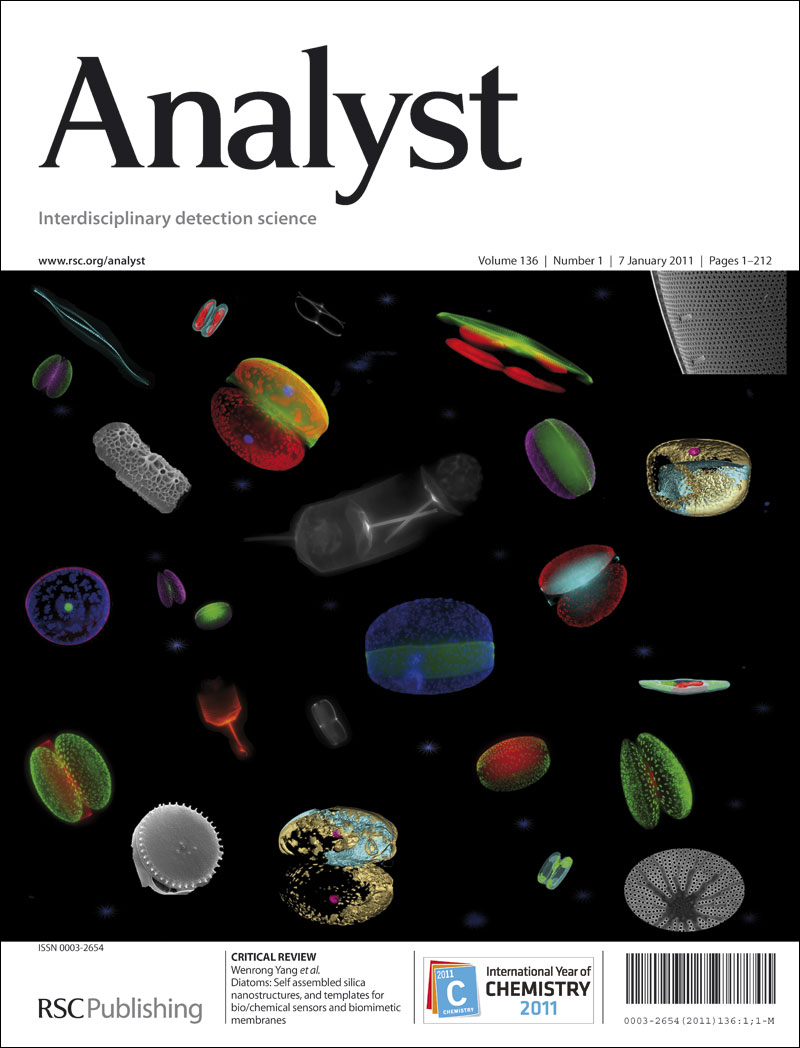Ratiometric Luminescence Sensing of Bio-Macromolecules via Highly Sensitive Templated Pyrene-Based nanoGUMBOS
IF 3.6
3区 化学
Q2 CHEMISTRY, ANALYTICAL
引用次数: 0
Abstract
A series of pyrene-based ionic liquids comprised of a group of uniform materials based on organic salt (GUMBOS) were synthesized by incorporating pyrene butyrate with quaternary alkyl phosphonium and ammonium-based ionic liquid via ion exchange reaction incorporating a variation in alkyl chain length. Water-suspended crystalline pyrene-assimilated nanoparticles (nanoGUMBOS) were subsequently fabricated from the prepared GUMBOS via the reprecipitation method. Different photophysical and microscopic measurements were performed to confirm the crystalline molecular level stacking of pyrene fluorophores inside the nanoparticles. The pyrene moieties within the nanoGUMBOS showed a pronounced tendency for self-association upon excitation, resulting in a novel excited state aggregation-induced emission (ESAIE). Due to the bathochromically shifted strong aggregation-induced emission, this nanoGUMBOS is further employed in the sensitive and selective ratiometric detection of biomacromolecules in aqueous and serum media. As the excessive use of some biomacromolecules (heparin (HP) and protamine (PS)) can lead to undesired side effects in living systems, hence such detection can be very crucial. In most cases, interaction with biomacromolecules like heparin facilitates the formation of excimer species in pyrene systems, but to our utter surprise we observed the opposite phenomenon of excimer disintegration here. This presents a convenient method for detecting heparin in aqueous and serum media. Furthermore, using the nanoGUMBOS-heparin complex, we can also detect protamine sulfate. A detailed study of the detection mechanism is presented in this report.通过高灵敏度模板化芘基纳米古博斯对生物大分子进行比率发光传感
本文章由计算机程序翻译,如有差异,请以英文原文为准。
求助全文
约1分钟内获得全文
求助全文
来源期刊

Analyst
化学-分析化学
CiteScore
7.80
自引率
4.80%
发文量
636
审稿时长
1.9 months
期刊介绍:
"Analyst" journal is the home of premier fundamental discoveries, inventions and applications in the analytical and bioanalytical sciences.
 求助内容:
求助内容: 应助结果提醒方式:
应助结果提醒方式:


